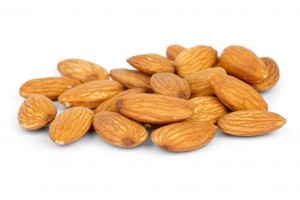Massage In SW Florida
Learn about Massage and Health Benefits
Archives
Categories
Recent Articles
- Professional stress and pain relief are just a click away.
- HEALTH BENEFITS OF PAPAYA.
- Our Facebook Page.
- Massage Therapy Benefits Cancer Patients
- Human Anatomy Quiz part 1
- The Health Benefits of Eating Almonds
- Avocados: 10 Nutritional Benefits
- Cancer’s Natural Enemy
- Glucosamine and Chondroitin Sulfates Target Arthritis
- Energize Naturally with ENADA
-
No Comments
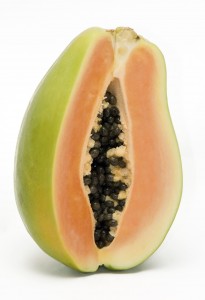
* Papaya contains a high amount of potassium and the flesh of papaya is very high in Vitamin A.
* Papaya seeds and leaves are useful in treating intestinal worms found in the body.[
* Papaya helps prevent constipation and also aid in digestion. Papaya contains the protein called papain which is a digestive enzyme that helps in natural digestion process.
* Papaya juice helps in alleviating infections of the colon by clearing away the infection, pus and mucus. Regular consumption will help in improving the problem.
* The skin of papaya is excellent for treating skin wounds and places that do not heal quickly.
* Papaya is low in calories and high in nutritive value hence it is an excellent food for those on a diet.
* Regularly consuming papaya helps to relieve morning sickness and nausea.
* Papaya has anti-inflammatory properties and anti-cancerous properties. The anti-inflammatory properties in papaya will help reduce pain for those suffering from arthritis, edema and osteoporosis.
* Papaya is very good for those who frequently suffer from cold, cough or flu because intake of papaya boosts the immune system. The high concentration of Vitamin C and Vitamin A contained in papaya is very beneficial to strengthen the immune system.
* Papaya is also very good for the hair and helps in controlling dandruff. Papaya shampoos are good for the hair and are available in many health stores.
* Raw papaya also helps in reducing menstrual irregularities for women. Papaya helps to ease the condition by promoting natural flow of menstruation.
* Papaya cleans the stomach and studies have shown that papaya alone eaten for 3 to 4 days has a highly beneficial tonic effect upon the stomach and intestines.
All the parts of the papaya fruit are useful and beneficial. Right from the seeds to the papaya leaves and the flesh of the fruit, all of it has some value. Both the inside and the outside of the fruit can be utilized .Thus no part of the fruit is useless or goes as a waste
Thus, if love to eat to papaya, it is great because along with savouring the taste you are also ingesting all the benefits associated with eating the fruit, which will result in good health for you !
-
No Comments
 Massage is the manipulation of outer and deeper tissues of the body, including muscle and connective tissue, typically using one’s hands. Massage therapy has the potential to speed the healing process, promotes relaxation, and foster overall well-being. It involves putting pressure on the body through motion, tension, or vibration, and can be done with mechanical aids or manually. Massage therapy can help relieve soreness, stiffness, and tension in the muscles and improve muscle tone. It helps increase muscle flexibility and range of motion in the limbs. It can reduce scar tissue, speed recovery from exercise, prevent muscle wasting, and increase physical confidence.
Massage is the manipulation of outer and deeper tissues of the body, including muscle and connective tissue, typically using one’s hands. Massage therapy has the potential to speed the healing process, promotes relaxation, and foster overall well-being. It involves putting pressure on the body through motion, tension, or vibration, and can be done with mechanical aids or manually. Massage therapy can help relieve soreness, stiffness, and tension in the muscles and improve muscle tone. It helps increase muscle flexibility and range of motion in the limbs. It can reduce scar tissue, speed recovery from exercise, prevent muscle wasting, and increase physical confidence.Massage therapy helps reduce inflammation in muscles and boosts cellular energy production. A study conducted by the Buck Institute found that long-term massage lowers levels of chronic pain and helps in improving range of motion in joints.
Muscle cells that had been massaged showed increased activation of genes that boosted mitochondrial growth, the energy “factories” of cells. Massaged cells also displayed less inflammation. Cancer patients, even those undergoing mesothelioma, breast cancer, or leukemia sometimes are looking for ways to augment their conventional cancer treatment or combat some of the side effects of cancer treatment. Many have found that massage helps alleviate their side effects and gives them more energy and a sense of well-being. Some cautions do apply for massage therapists who are treating cancer patients, however. Massage therapists treating cancer patients need to be in touch with their client’s oncologist to make sure there are no special restrictions on that patient. Some cancer patients are very frail, both from the cancer itself and the side effects of their treatment. These types of patients may need to recover some strength before benefiting from massage therapy. Others are too frail to undergo more vigorous forms of massage, but could benefit from milder massage.
Often, clients who are cancer patients do not require full massage sessions and might benefit from one lasting no more than 30 minutes. Sometimes, only five minutes is helpful. These patients should be massaged using a lighter touch, taking special care to avoid tender areas or tumor sites, lymph nodes, and areas that have undergone radiation treatment.
Massage therapists are also encouraged to pay attention to any signals their cancer patient clients may be sending. The patient may flinch or grimace when certain areas are touched, so avoid those areas. They may also tighten their muscles or hold their breath when some areas are manipulated. This is an opportunity for the massage therapist to ask them how they are doing and if less pressure would be preferable.
Another benefit of massage therapy for patients is the increased production of “feel good” chemicals like endorphins. These chemicals reduce levels of pain; something that many cancer patients report during treatment.
Cancer patients who want to experience these benefits should consult with their oncology team to ensure that this type of therapy does not conflict with their ongoing therapy. Talk to your doctor and find a therapy that will work best for you and your treatment and give your mind, body and spirit a vacation from some of life’s everyday stressor and soak up the potential benefits of what massage therapy has to offer!
http://www.mesothelioma.com/blog/authors/melanie/
-
No CommentsAlmonds health benefits are at the top of the tree as far as being the healthiest nut we can eat.Facts are, the 90 percent of the fats in almonds are unsaturated, and the nuts are high in protein, fiber, calcium, magnesium, potassium, vitamin E, and other antioxidants.Almonds had been considered in the past too fatty to be a healthy snack, but studies have shown that eating three ounces a day, decreased blood cholesterol levels up to 14%.Other researches have shown links between nuts (especially almond) consumption and lower risk of cancer, diabetes, Alzheimer disease and other illnesses.The folic acid in almonds is believed to help lower levels of homocystein, the amino acid that is thought to contribute to the buildup of fatty plaque in the arteries. This nut, also help prevent osteoporosis and regulate blood pressure.
-
1 Comment
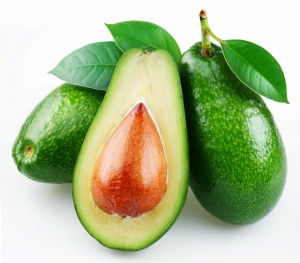 Avocados are rich in vitamins A, C, and E and are full of other nutrients like potassium. They contain folate, monosaturated fats and antioxidants. Regular consumption of avocados helps us in many ways. Here are just 10 of them:1. The monosaturated fats in avocados not only help in reducing LDL cholesterol but are also good for the heart. Avocado also lowers the triglycerides in the blood and thus is useful for diabetic patients.2. Avocado contains 30% more potassium than banana. The high potassium content helps in regulating blood pressure and prevents circulatory diseases.3. Avocados are good for pregnant women since the high folate content in them helps in the development of brain and other tissues of the baby. The B6 vitamin in these fruits may help in reducing nausea that is associated with pregnancy.4. Avocado contains carotenoid lutein. Lutein keeps the eyes safe from oxidative stress, macular degeneration, and cataracts.5. Avocados have numerous phytonutrients which not only prevent prostate cancer but also repair the damaged cells.6. Many studies have shown that avocado can inhibit the growth of cancerous cells without damaging the healthy cells. The oleic acid in this fruit is effective in preventing breast cancer.7. It is a powerhouse of vitamin E which protects our skin from free radicals.8. Avocado is very effective in stopping bad breath. It also reduces the risk of oral cancer.9. Being rich in antioxidants, avocado is helpful in preventing aging symptoms. The glutathione in avocado boosts immune systems, slows the aging process, and encourages a healthy nervous system.10. The nutrients and enzymes in avocado soothes the condition of inflamed mucous lining in the stomach and small intestines. It also improves the body’s ability to absorb carotenoids and nutrients
Avocados are rich in vitamins A, C, and E and are full of other nutrients like potassium. They contain folate, monosaturated fats and antioxidants. Regular consumption of avocados helps us in many ways. Here are just 10 of them:1. The monosaturated fats in avocados not only help in reducing LDL cholesterol but are also good for the heart. Avocado also lowers the triglycerides in the blood and thus is useful for diabetic patients.2. Avocado contains 30% more potassium than banana. The high potassium content helps in regulating blood pressure and prevents circulatory diseases.3. Avocados are good for pregnant women since the high folate content in them helps in the development of brain and other tissues of the baby. The B6 vitamin in these fruits may help in reducing nausea that is associated with pregnancy.4. Avocado contains carotenoid lutein. Lutein keeps the eyes safe from oxidative stress, macular degeneration, and cataracts.5. Avocados have numerous phytonutrients which not only prevent prostate cancer but also repair the damaged cells.6. Many studies have shown that avocado can inhibit the growth of cancerous cells without damaging the healthy cells. The oleic acid in this fruit is effective in preventing breast cancer.7. It is a powerhouse of vitamin E which protects our skin from free radicals.8. Avocado is very effective in stopping bad breath. It also reduces the risk of oral cancer.9. Being rich in antioxidants, avocado is helpful in preventing aging symptoms. The glutathione in avocado boosts immune systems, slows the aging process, and encourages a healthy nervous system.10. The nutrients and enzymes in avocado soothes the condition of inflamed mucous lining in the stomach and small intestines. It also improves the body’s ability to absorb carotenoids and nutrients -
No Comments
Japanese researches have uncovered a remarkable new way to boost your immune system’s ability to kill cancer cells, viruses and pathogenic bacterias by up to 300%
Cancer rates in the U.S. are officially off the charts. A century ago the disease occurred in 1 in 100 people. Today, half of all adults will get some form of cancer in their lifetime. That is 1 in 2 people.
Why this alarming increase?
It is being caused by a steady and widespread breakdown of the immune system among our population. Cancer cells are naturally present in everyone’s bloodstream, but are kept in check by a special immune cell called NK (short for “natural killer”). When NK activity weakens–either from old age, poor nutrition or stress–cancer cells are free to multiply and become tumors.
We need better treatments.
Once a person is diagnosed with cancer, the only treatments permitted in U.S. are chemotherapy and radiation which can do nearly as much damage to the patients as they do to the cancer. Both have horrendous side effects and both poison the immune system and destroy NK cells, thus increasing the chances of relapse. And both have poor long-term survival rate.
This is not the case in other countries. In Japan, for instance, a surprising new, natural cancer treatment involves stimulating the patient’s immune system so tumors are gobbled up by a feeding frenzy of NK cells.
You might be surprised to learn that doctors trigger this sudden blast of the immune activity with a natural substance found in certain Japanese mushrooms. These mushroom extracts are now one of the leading cancer prescription treatments in that country.
Using the immune system like this is the next big frontier in medicine. It holds the promise of finding real cures, not just for cancer, but heart disease, arthritis, allergies and many other ills.
The good news is that scientists have isolated the active substance in this medicinal mushrooms, called Active Hexose Correlated Compound or AHCC and put it into capsule form.
AHCC accomplishes the impossible.
Initial studies done with AHCC since the 1980s suggest that this is one of the most powerful human immune boosters ever tested. It appears to increase NK cell activity by up 300% or more. And it works quickly, usually within hours.
Officials at NASA have even found that AHCC can be useful in preventing and treating infections in astronauts while they are in space
-
No Comments
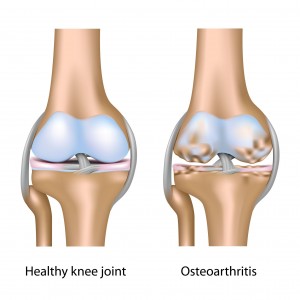 Since the publication of the Arthritis Cure, articles and products touting the benefits of glucosamine and chondroitin sulfates have flooded the American market. But can these substances actually improve arthritis symptoms and is there good science and research to support their use? The answer to both of these questions is yes.
Since the publication of the Arthritis Cure, articles and products touting the benefits of glucosamine and chondroitin sulfates have flooded the American market. But can these substances actually improve arthritis symptoms and is there good science and research to support their use? The answer to both of these questions is yes.
Doctors in Europe and Asia have been using glucosamine and chondroitin sulfates for years to treat osteoarthritis and other joint problems. Numerous studies have shown that these substances are effective in reducing joint pain, swelling and tenderness and improving range of motion. Thousands of patients worldwide have found relief through the use of these ingredients. Despite these positive findings overseas, glucosamine and chondroitin sulfates did not become well known in the US until the publication of the best- seller The Arthritis Cure by Jason Theodosakis, M.D., M.S., M.P.H. In the book, Dr. Theodosakis lays out the scientific basis for the use of these ingredients and the large body of research supporting their use in osteoarthritis.
Osteoarthritis, the most common form of arthritis, is a degenerative joint disease that affects approximately 30 million people in the US. NSAIDS (non-steroidal anti-inflammatory drugs) such as aspirin and ibuprofen or acetaminophen (Tylenol) can help manage the pain, but they can have dangerous side effects and drug interactions. Long-term use of the NSAIDS can actually worsen joint damage. Glucosamine and chondroitin sulfates, on the other hand, actually address the cause of osteoarthritis and exert a beneficial effect on the disease process itself.
Glucosamine sulfate is a naturally occurring ingredient made up of sugar and an amino acid. It is needed to produce proteoglycans, substances that are essential to the structure and function of cartilage in the joint. Glucosamine sulfate provides the joints with the building blocks needed to repair damage from osteoarthritis. Glucosamine sulfate has been the subject of over 300 scientific investigations including over 20 double-blind studies. These studies have shown that glucosamine sulfate helps to reduce pain and improve joint function in those with osteoarthritis. Results of ten clinical studies show that glucosamine sulfate relieves the symptoms of osteoarthritis at least as effectively as NSAIDS.
Chondroitin sulfate consists of long chains of sugar units. It is a major component of cartilage where it functions to hold in fluid and nutrients. In damaged joints, chondroitin sulfate helps to inhibit cartilage-destroying enzymes. Chondroitin sulfate is also responsible for giving cartilage its sponge-like quality.
As the evidence shows, there is now a better approach to arthritis than simply blocking pain and inflammation with drugs. Glucosamine and chondroitin sulfate can halt and even reverse the process of arthritic joint damage. These substances are normally found in the body and do not produce any significant side effects. Taking these supplements can actually help the body to repair the damaged joints themselves leading to a reduction in pain and swelling and an increase in mobility.
-
1 Comment
 ENADA is the ONLY patented, stabilized, absorbable oral form of NADH available.
ENADA is the ONLY patented, stabilized, absorbable oral form of NADH available.
NADH is a coenzyme naturally present in all living cells that is necessary for energy production and cellular development. It is also essential to the functioning of the body’s immune system. NADH triggers energy production in all cells by generating ATP, the body’s energy storehouse.
NADH stimulates production of serotonin and other neurotransmitters, which help to improve mental clarity, alertness and concentration. NADH is a powerful antioxidant, and it plays a key role in repairing damage to DNA.
In a recent FDA-approved study conducted at Georgetown Medical Center, CFS patients taking ENADA NADH were four times more likely to improve than those taking a placebo. During a longer follow-up study, it was observed that 73% of the subjects achieved marked improvement over time. This study marked one of the only times the FDA has approved testing of a nutritional supplement for potential medical benefit. Leading CFS doctors and researchers recommend ENADA to increase energy levels and improve symptoms of chronic fatigue syndrome. In addition to its positive effects on CFS, ENADA has shown tremendous potential as a natural anti-depressant. In a recent study of 205 patients suffering from depression, all benefited from ENADA. In the study, ENADA was shown to alleviate symptoms of depression such as hopelessness, guilt, sleep disturbances and suicidal thoughts. NADH helps to balance brain chemical such as norepinephrine, serotonin, and dopamine.
NADH is a valuable tool in the fight against aging especially age-related mental decline. ENADA NADH can energize aging or degenerative brain cells. Also, its ability as an antioxidant can protect the brain from cellular damage due to free radicals. Studies in Alzheimer’s patients have been very encouraging. ENADA is currently being tested at Georgetown University Medical Center for the treatment of Alzheimer’s Disease, and in long-term CFS studies.
ENADA is not just for those with chronic disease or age-related illness. It is used by athletes who want to gain an edge and by individuals wanting to naturally and safely increase energy levels.
ENADA is very safe with no side effects. It has no known interaction with prescription medications or other supplements. -
No CommentsWater is the reason your body works the way it does and without water your body would not be able to perform even the simplest functions. When the body can no longer perform theses functions normally, the body begins breaking down and can cause serious health conditions to arise.Some of the most remarkable benefits of hydration are listed below:
- Brain Adequate hydration is important for proper functioning of the brain. When we are well hydrated, brain cells are better supplied with fresh, oxygen-laden blood, and the brain remains alert. Mild dehydration, a 1% to 2% loss in body weight, can impair the ability to concentrate. Loss of more than 2% body weight due to dehydration can affect the brain’s processing abilities and impair short-term memory.
- Cells Hydration in the body is important for transporting carbohydrates, vitamins, minerals and other important nutrients and oxygen to the cells. The cells then produce energy for the body to function. Furthermore, hydration facilitates disposal of the waste products of metabolism, enabling the right cellular chemical function.
- Digestive Tract Hydration plays an important role in the digestion of food and the absorption of nutrients from the digestive tract. Water is required to dissolve nutrients so that they may be absorbed into the bloodstream and delivered to the cells. Insufficient hydration will slow the digestive process and chronic poor hydration can lead to constipation.
- Heart Fluids are important for healthy heart function and the correct regulation of water balance is essential to keep blood pressure within the healthy range. Dehydration decreases cardiac output which may lead to increases in heart rate and a fall in blood pressure. The circulatory system delivers a constant supply of oxygen to the brain, muscles and to all other tissues.
- Kidneys An adequate water intake is essential to keep the kidneys working well, helping them to remove waste products and excess nutrients mainly via urine. The kidneys regulate the body’s water levels by increasing or decreasing the flow of urine. The kidneys also work to control normal levels of sodium and other electrolytes. A well-hydrated healthy person’s kidneys filter approximately 180 litres of water each day: clearly most of this has to be reabsorbed to prevent excessive losses from the body.
- Muscles and Joints Water acts as a lubricant for muscles and joints; it helps cushion joints and keeps muscles working properly. Muscles and joints, in addition to the bones, are necessary for us to stand, sit, move and carry out all daily activities. Approximately 70 to 75 percent of the muscle is made up of water. Maintaining the right water balance is essential for optimum muscle function.
- Skin The skin constitutes a defence against pathogenic agents and contributes to preventing the development of infectious and allergic processes. Some people believe that good hydration helps to moisten body tissues and preserve the skin’s elasticity, softness and colouring though this has not been researched adequately.
- Temperature The body water has an important role as a thermoregulator, regulating the overall body temperature by helping dissipate heat. If the body becomes too hot, water is lost through sweat and the evaporation of this sweat from the skin surface removes heat from the body. Sweating is the most effective way that the body prevents itself from overheating.
How much water do you need?Every day you lose water through your breath, perspiration, urine and bowel movementsThe Institute of Medicine determined that an adequate intake for men is roughly 3 liters (about 13 cups) of total beverages a day and for women is 2.2 liters (about 9 cups) of total beverages a day.You may need to modify your total fluid intake depending on how active you are, the climate you live in, your health condition and if you are pregnant or breast-feeding.- Exercise. If you exercise or engage in any activity that makes you sweat, you need to drink extra water to compensate for the fluid loss. An extra 400 to 600 milliliters (about 1.5 to 2.5 cups) of water should suffice for short bouts of exercise, but intense exercise lasting more than an hour (for example, running a marathon) requires more fluid intake. How much additional fluid you need depends on how much you sweat during exercise, and the duration and type of exercise.
- Climate. Hot or humid weather can make you sweat and requires additional intake of fluid. Heated indoor air also can cause your skin to lose moisture during wintertime. Further, altitudes greater than 8,200 feet (2,500 meters) may trigger increased urination and more rapid breathing, which use up more of your fluid reserves.
- Illnesses or health conditions. When you have fever, vomiting or diarrhea, your body loses additional fluids. In these cases, you should drink more water. In some cases, your doctor may recommend oral rehydration solutions, such as Gatorade, Powerade or CeraLyte. Also, you may need increased fluid intake if you develop certain conditions, including bladder infections or urinary tract stones. On the other hand, some conditions such as heart failure and some types of kidney, liver and adrenal diseases may impair excretion of water and even require that you limit your fluid intake.
- Pregnancy or breast-feeding. Women who are expecting or breast-feeding need additional fluids to stay hydrated. Large amounts of fluid are used especially when nursing. The Institute of Medicine recommends that pregnant women drink 2.3 liters (about 10 cups) of fluids daily and women who breast-feed consume 3.1 liters (about 13 cups) of fluids a day.
Recognizing Dehydration:
Here are some of the symptoms that you need more water:
- Dark Urine – Dark Yellow or Orange in Color: Urine is generally pale yellow to clear when you have sufficient water intake. Dark color or strong smell indicates that you need to drink more water.
- Dry Skin: Skin is the largest body organ and requires its share of water.
- Thirst: Thirst is the most obvious sign that you are already dehydrated. It is always a good practice to drink more water when your are not thirsty, do not wait until you are thirsty. But thirst is not always an adequate gauge of your body’s need for fluid replenishment. The older you are, the less you are able to sense that you are thirsty.
- Hunger: Most people mistake hunger for the indication to eat more, whereas in actual fact, they may be dehydrated. So before you have your meal, grab a glass of water.
- Fatigue: Water is a source of energy and gives you a boost in energy
Common Beverage Substitutions Lead to DehydrationIt is true that beverages such as tea, coffee, wine, beer, soft drinks, sports drinks and juices contain water, but they also contain caffeine, alcohol, sugar, artificial sweeteners or other chemicals that act as strong dehydrators. The more of these beverages you consume, the more dehydrated your body becomes because the effects they create in the body are exactly opposite the ones that are produced by water. Beverages containing caffeine, for example, trigger stress responses that at first have strong diuretic effects, leading to increased urination. Beverages with added sugar drastically raise blood sugar levels. Any beverage that provokes such a response coerces the body to give up large quantities of water. Regular consumption of such beverages results in chronic dehydration, which plays a part in every toxicity crisis (the body’s effort to rid itself of accumulated toxins). -
1 CommentResearchers at Barts and The London School of Medicine demonstrated that drinking two cups of beetroot juice daily significantly reduced blood pressure in healthy volunteers.The secret is the nitrate in the beetroot juice, which is responsible for lowering the volunteers’ blood pressure.In the human body, nitrate is converted to nitric oxide, a substance that is known for its ability to dilate blood vessels and subsequently reduce blood pressure. The human
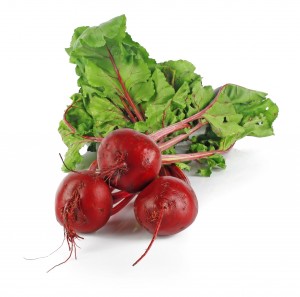 body produces nitric oxide naturally. Unfortunately, nitric oxide production declines progressively with age.Among the study participants, blood pressure fell within just one hour of drinking the beetroot juice, with the greatest drop occurring three to four hours following consumption. The blood pressure-lowering effects continued for up to 24 hours afterward.Recently, however, some scientists have begun investigating the roles played by other plant compounds, particularly nitrate. Nitrate occurs naturally in many vegetables, including spinach, cabbage, radishes and, of course, beets.
body produces nitric oxide naturally. Unfortunately, nitric oxide production declines progressively with age.Among the study participants, blood pressure fell within just one hour of drinking the beetroot juice, with the greatest drop occurring three to four hours following consumption. The blood pressure-lowering effects continued for up to 24 hours afterward.Recently, however, some scientists have begun investigating the roles played by other plant compounds, particularly nitrate. Nitrate occurs naturally in many vegetables, including spinach, cabbage, radishes and, of course, beets.
Just make sure you take into account the extra calories and sugar. A two-cup serving of beetroot juice contains around 200 calories and 50 grams of carbohydrates. If you don’t adjust your daily caloric intake, adding two cups of the juice daily could lead to a weight gain of about a pound and a half a month, which could potentially offset the beetroot-derived cardiovascular benefits. -
No Comments
 There are many different ways to reduce stress and anxiety to make each day calm and peaceful.
Though experts say that some stress is good for you, because it can sharpen your senses and your mind, too much stress is bad for your mental and physical health.
Here are some simple techniques that you can do by yourself and it will help you to enjoy a better quality of life once you have incorporated a relaxation program into your lifestyle.
First Exercise: Focus
Select an object in the room that you are in and focus all your attention on this object as you inhale and exhale slowly deeply for a minute or two. While you are doing this, do not let any other thoughts and/or feelings enter your mind. If they do, just return your attention to the object in the room. Any tension or nervousness that you might feel before starting this exercise should be diminished.
Second Exercise: Meditation
Sit or lay in a comfortable position, close your eyes and breath deeply. Focus all your attention on your breathing which should be slow and relaxed. Notice the movement of your chest and abdomen.
Block out any thought or distraction. If you feel that your attention is wandering, then bring it back to your breathing.
As you inhale, say the word “peace” and as you exhale say the word “calm” to yourself, drawing out the pronunciation of the word, so it last for the entire breath. Continue this exercise until you feel relaxed.
Third Exercise: Picture yourself relaxed
Try creating a peaceful visualization, or “dream scape.” To start, simply visualize anything that keeps your thoughts away from current tensions. It could be a favorite vacation spot or a fantasy island.
The idea is to take your mind off your stress, and replace it with an image that evokes a sense of calm. The more realistic is your daydream, in terms of colors, sights, sounds; even touch and feel, the more relaxation you will experience.
Fourth Exercise: Try to massage yourself
When your muscles are tense and you have no time to visit a therapist, try these simple self-massage techniques.
- Place both hands on your shoulders and neck and squeeze with your fingers and palms. Remember to keep your shoulders relaxed.
-Wrap one hand around the other forearm. Squeeze the muscles with thumb and fingers.Move up and down from your elbow to fingertips and back again. Repeat with other arm.
Fifth Exercise: Listen to a soothing music CD
Expert say that music can calm the heartbeat and soothe the soul.
You might want to make that a classical tune. Research shows that listening to 30 minutes of classical music may produce calming effects equivalent to taking 10 mg of Valium.
There are many different ways to reduce stress and anxiety to make each day calm and peaceful.
Though experts say that some stress is good for you, because it can sharpen your senses and your mind, too much stress is bad for your mental and physical health.
Here are some simple techniques that you can do by yourself and it will help you to enjoy a better quality of life once you have incorporated a relaxation program into your lifestyle.
First Exercise: Focus
Select an object in the room that you are in and focus all your attention on this object as you inhale and exhale slowly deeply for a minute or two. While you are doing this, do not let any other thoughts and/or feelings enter your mind. If they do, just return your attention to the object in the room. Any tension or nervousness that you might feel before starting this exercise should be diminished.
Second Exercise: Meditation
Sit or lay in a comfortable position, close your eyes and breath deeply. Focus all your attention on your breathing which should be slow and relaxed. Notice the movement of your chest and abdomen.
Block out any thought or distraction. If you feel that your attention is wandering, then bring it back to your breathing.
As you inhale, say the word “peace” and as you exhale say the word “calm” to yourself, drawing out the pronunciation of the word, so it last for the entire breath. Continue this exercise until you feel relaxed.
Third Exercise: Picture yourself relaxed
Try creating a peaceful visualization, or “dream scape.” To start, simply visualize anything that keeps your thoughts away from current tensions. It could be a favorite vacation spot or a fantasy island.
The idea is to take your mind off your stress, and replace it with an image that evokes a sense of calm. The more realistic is your daydream, in terms of colors, sights, sounds; even touch and feel, the more relaxation you will experience.
Fourth Exercise: Try to massage yourself
When your muscles are tense and you have no time to visit a therapist, try these simple self-massage techniques.
- Place both hands on your shoulders and neck and squeeze with your fingers and palms. Remember to keep your shoulders relaxed.
-Wrap one hand around the other forearm. Squeeze the muscles with thumb and fingers.Move up and down from your elbow to fingertips and back again. Repeat with other arm.
Fifth Exercise: Listen to a soothing music CD
Expert say that music can calm the heartbeat and soothe the soul.
You might want to make that a classical tune. Research shows that listening to 30 minutes of classical music may produce calming effects equivalent to taking 10 mg of Valium.

